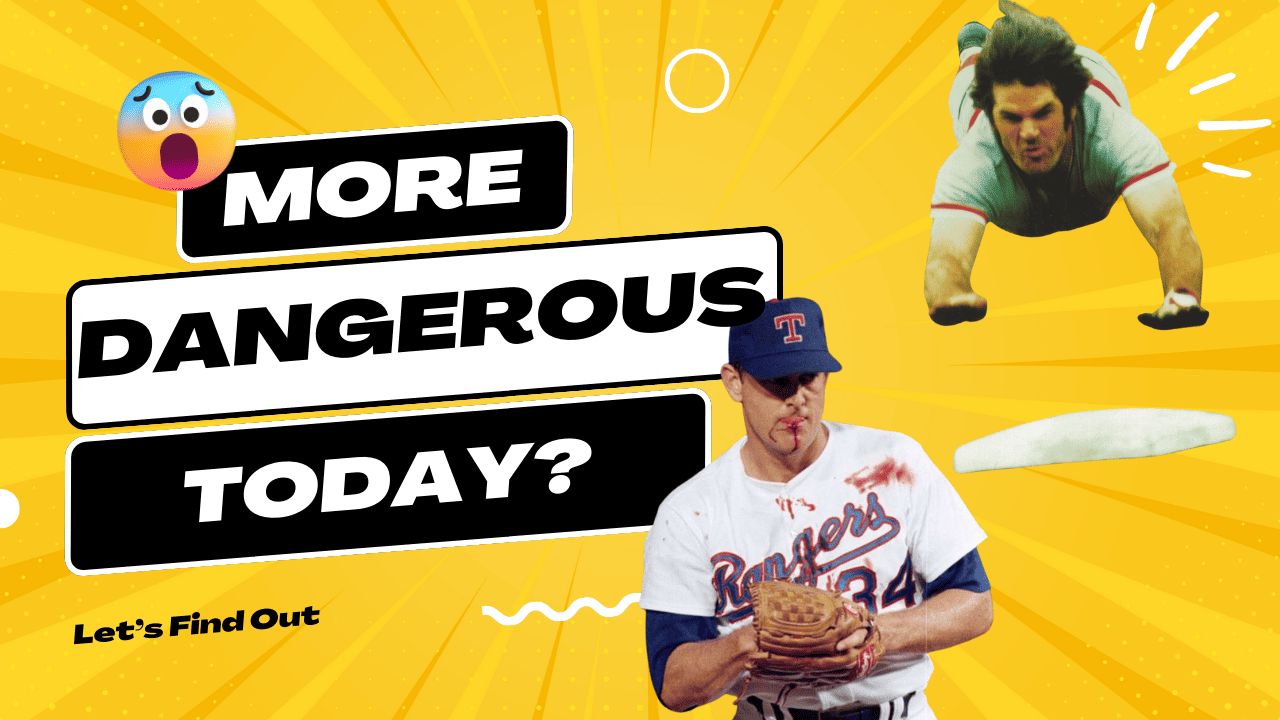Last Updated: February 23rd, 2024 by Jake Cain
Baseball, America’s pastime, is often romanticized for its timeless charm and unhurried pace. Yet, a recent video posted by a YouTube channel called “Baseball Doesn’t Exist” reveals a less discussed but increasingly troubling aspect of the game: the rising peril players face every time they step onto the diamond. Titled “Why Baseball Is More Dangerous Than Ever,” the video delves into the paradoxical increase in injuries in the sport—even as safety measures improve.
The contrast is stark when considering the history of baseball. Concrete outfield walls, the absence of protective netting for fans, and players wearing minimal protective gear, if any, were once commonplace. Today, we see padded fences, helmets with face guards, and extensive netting, which should, in theory, reduce risk. Yet, injuries are climbing at a staggering rate, a trend that James Wagner from The New York Times also highlights, pointing out the alarming spike in soft-tissue injuries like strains and pulls.
Ironically, modern approaches to player health seem more of a curse than a blessing. Despite fewer pitches thrown and a significant focus on arm care, Tommy John surgeries are more frequent now than in the entire decade of the ’80s. Players might be donning more armor, but they’re also getting plunked—particularly in the face—more often than ever before.
The reasons behind these injuries can be as bizarre as they are varied. Joel Zumaya’s arm suffered not from overuse on the mound, but from strumming a guitar in the popular game Guitar Hero.
Moises Alou sustained injuries from running over his son with his bicycle.
And sneezing? Yes, that too has landed players on the injury list.
However, not all injuries are genuine. As the video explains, fake injuries are also at an all-time high, with teams allegedly coercing players to feign ailments or risk being cut. This manipulation of the injured list represents a troubling new strategy in the league.
Despite MLB’s ongoing efforts to mitigate these risks, incidents that recall the sport’s more hazardous past still occur. The video illustrates this by recalling instances where players like Pete Reiser suffered multiple severe injuries due to colliding with the solid outfield walls of yesteryear. And while most stadiums have now made the switch to padded walls, players still occasionally clash with the few remaining chain-link bullpen fences and scoreboards.
The financial consequences of these injuries are also staggering. In 1998, MLB teams shelled out $116 million to injured players who couldn’t take the field. Fast forward to 2021, and that figure had ballooned to $871 million—a 750% increase. Thus, team owners are more motivated than ever to champion safety, leading to significant rule changes.
Some of these changes have been successful in reducing specific types of injuries. After MLB banned the takeout slide—a tactic players used to disrupt a potential double play—the number of injuries plummeted. For instance, the notorious collision at home plate, which famously sidelined catcher Buster Posey for an entire season, led to the implementation of the “Buster Posey rule,” resulting in a 45% drop in collision-related injuries. However, as sliding into bases headfirst becomes more common, other types of injuries have risen, highlighting the complex balancing act between preserving the essence of baseball and ensuring player safety.
As MLB continues to grapple with this issue, the question remains: Can baseball retain its competitive edge without compromising the well-being of its players? The video prompts us to ponder this crucial dilemma, inviting fans to reconsider the true cost of America’s beloved sport.

